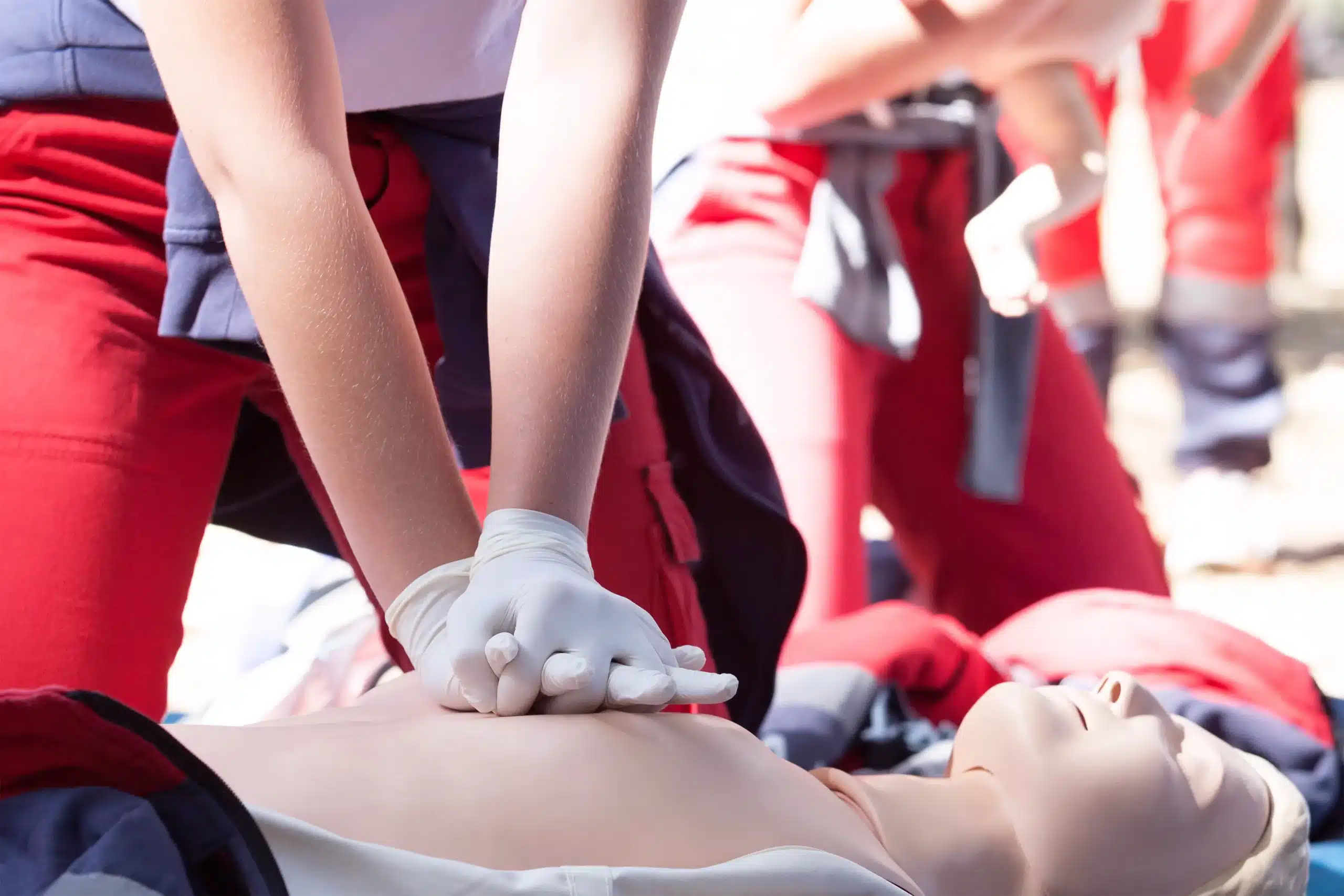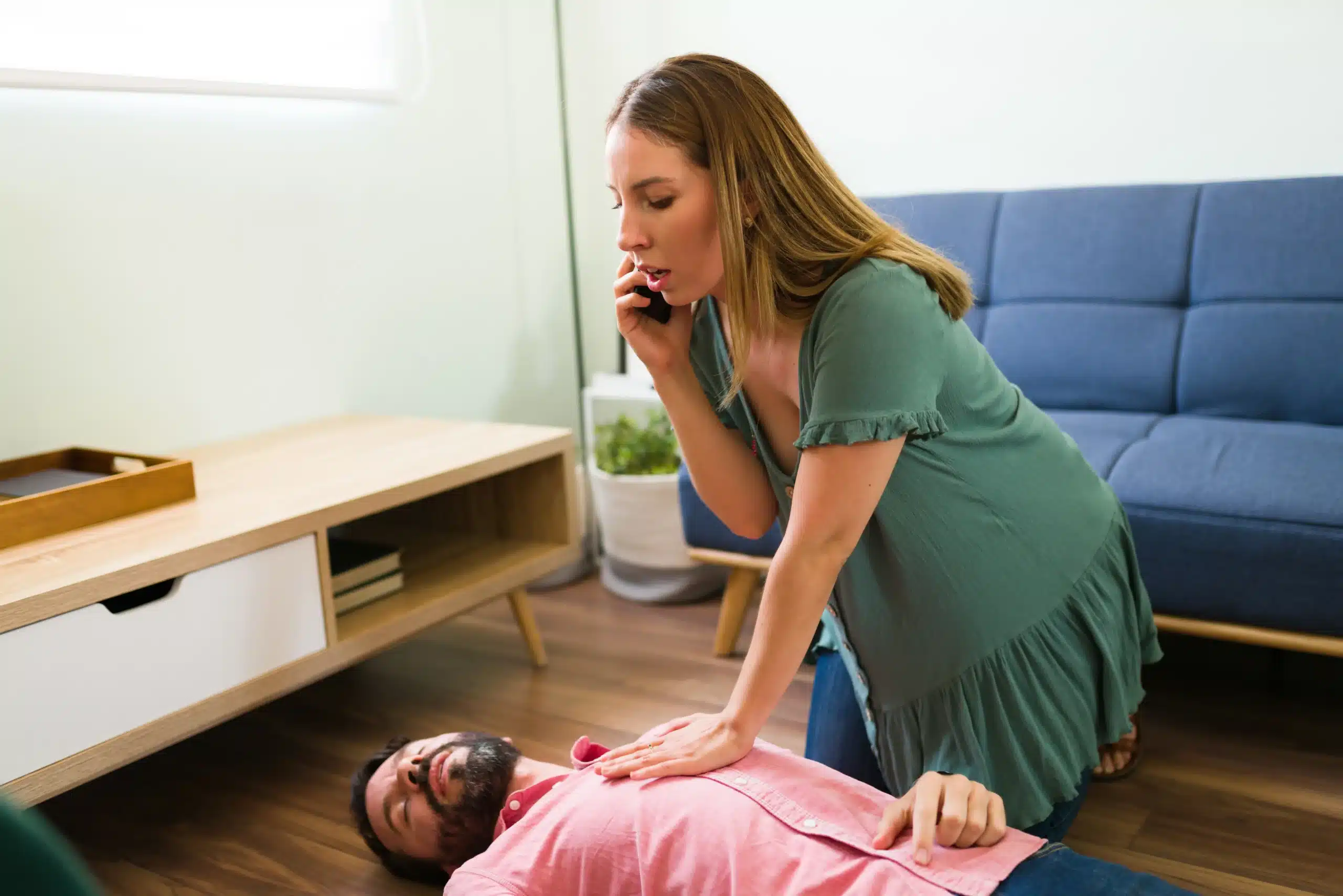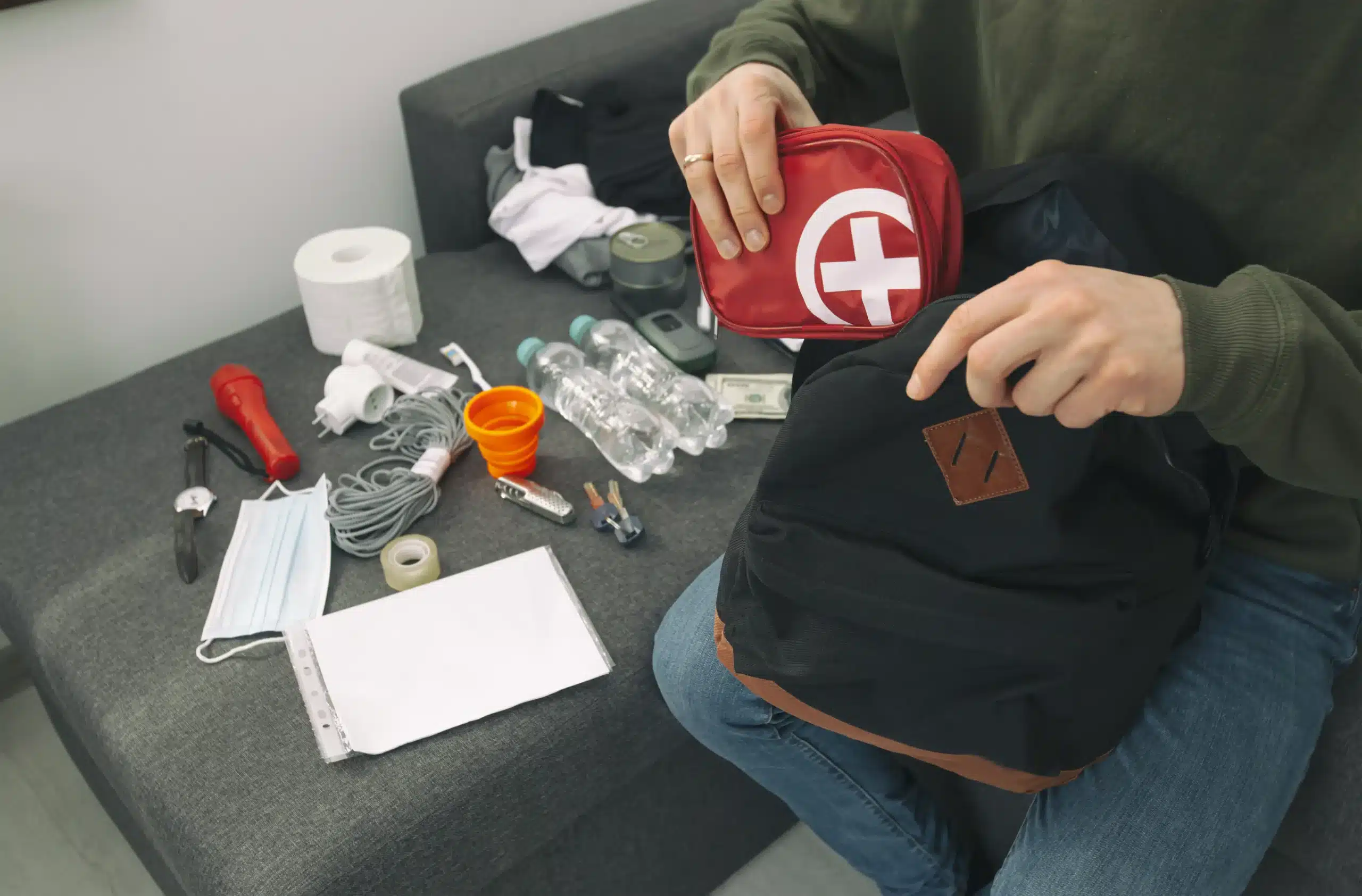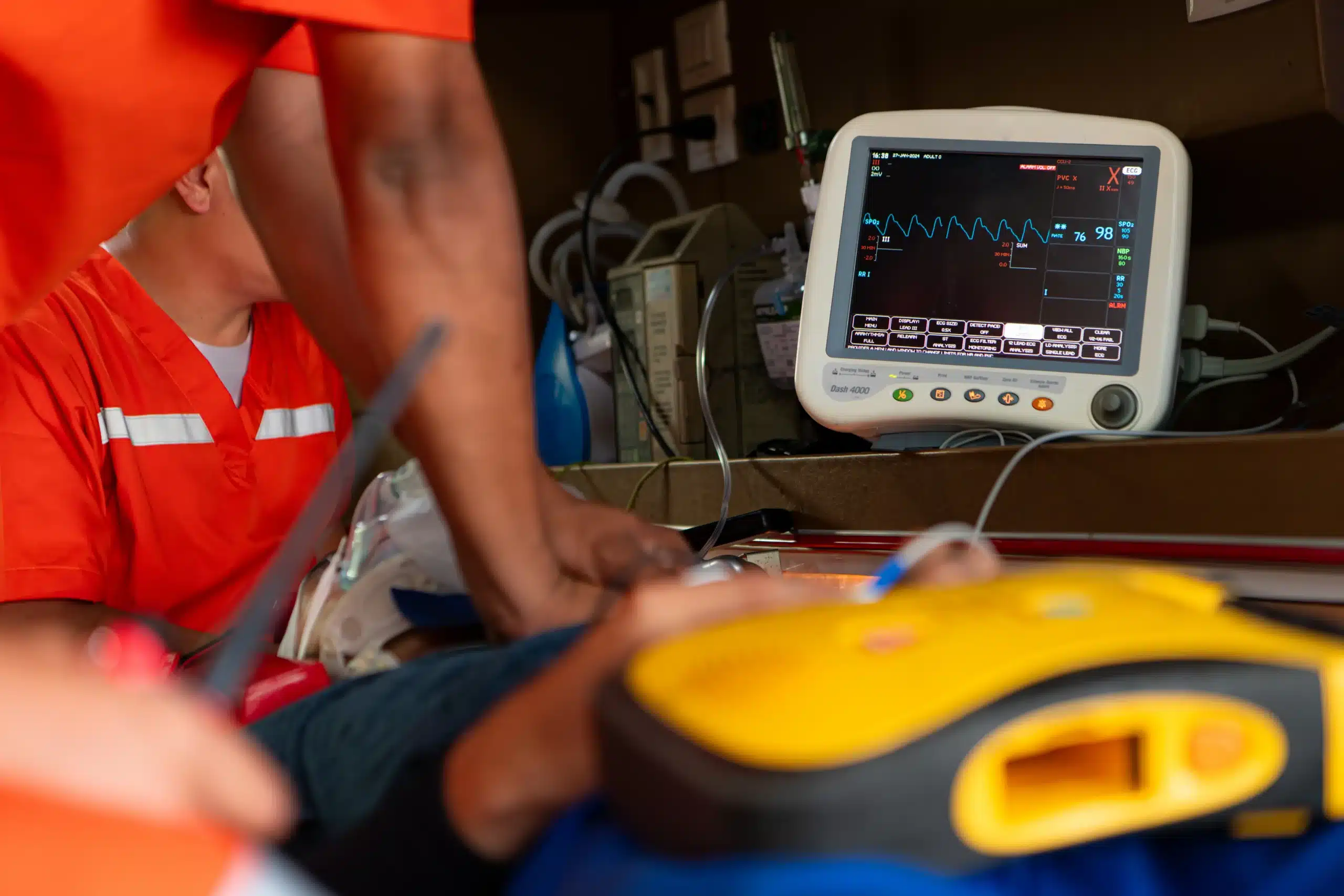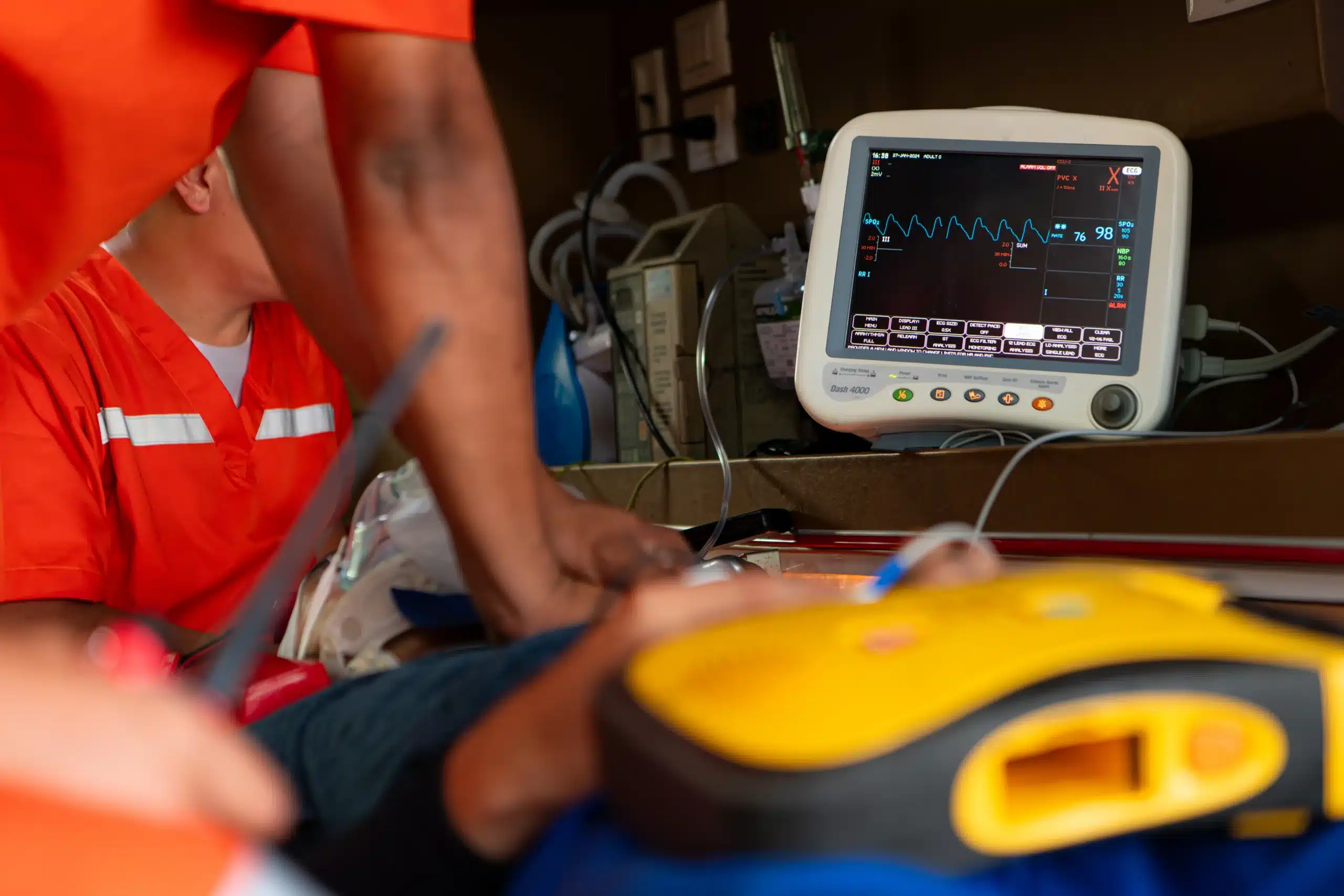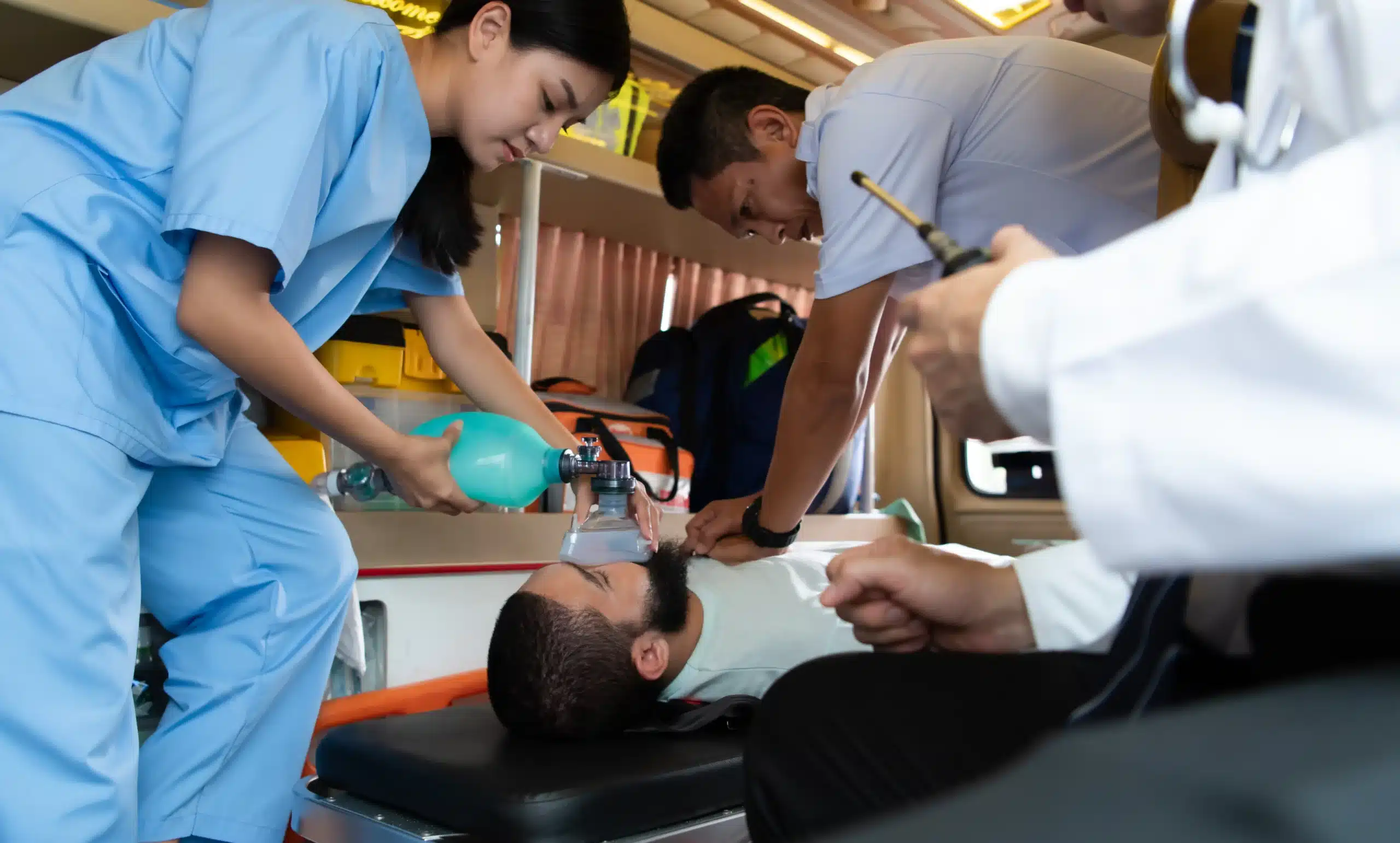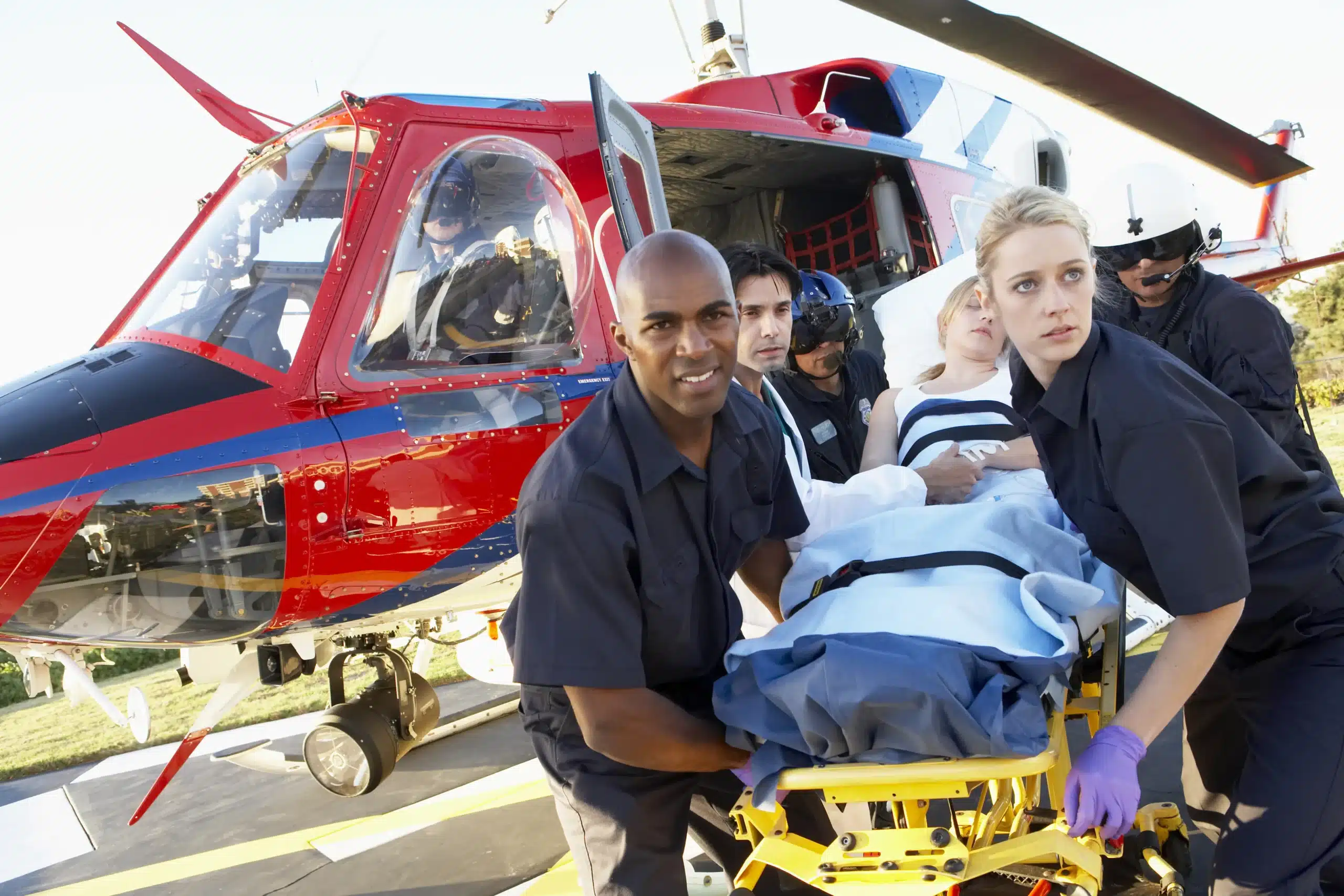Ever thought about how you’d react in a medical emergency? Would you feel confident and prepared, or frozen and unsure? Basic Life Support (BLS) certification empowers you to take action and potentially save a life. It’s more than just CPR—it’s a comprehensive approach to emergency care, covering everything from recognizing the signs of a medical crisis to providing high-quality chest compressions and using an AED. Whether you’re a healthcare professional or simply someone who wants to be prepared, BLS training offers invaluable skills and peace of mind. If you’re searching for “BLS classes near me,” this guide will walk you through everything you need to know, from understanding the core principles of BLS to finding the right course for your needs.
Key Takeaways
- BLS certification provides essential life-saving skills: From CPR and AED use to airway management, BLS training empowers you to respond effectively to medical emergencies, benefiting both healthcare professionals and the wider community.
- Finding the right BLS course involves several key considerations: Evaluate your learning style, ensure the course meets required certifications (like AHA), and choose a reputable provider such as your local hospital, community college, or a dedicated training center like Rocklin CPR Classes.
- Maintaining your BLS skills requires ongoing effort: Stay current by renewing your certification every two years and keeping up with the latest guidelines from organizations like the American Heart Association. This ensures you’re always prepared to provide the best possible care.
What is BLS?
Basic Life Support (BLS) certification equips you with the skills to respond to life-threatening emergencies. It’s a healthcare credential focused on providing immediate care to someone experiencing cardiac arrest, respiratory distress, or an obstructed airway. While many assume BLS is only for healthcare professionals, understanding its core principles can benefit everyone. It emphasizes early intervention, from recognizing the signs of an emergency to providing high-quality chest compressions and rescue breaths. BLS certification goes beyond basic CPR training, covering advanced techniques and team dynamics crucial for effective emergency response. It’s important to get accurate information, as there are some common misconceptions about BLS.
BLS Skills
BLS training provides the skills to respond effectively to medical emergencies. You’ll learn how to perform high-quality CPR for adults, children, and infants, including how to use an Automated External Defibrillator (AED). BLS also covers basic airway management techniques, such as using a bag-valve mask and relieving choking. These skills are crucial for maintaining oxygen flow until professional medical help arrives. Beyond the technical skills, BLS training emphasizes clear communication and teamwork during emergencies. You’ll learn how to coordinate with others in a crisis, ensuring a smooth and efficient response.
Who Needs BLS?
BLS certification is vital for healthcare providers and those in emergency response roles. This includes doctors, nurses, paramedics, EMTs, firefighters, and other first responders. It’s often a prerequisite for employment in these fields and ensures they can provide immediate, high-quality care in critical situations. While BLS is geared towards healthcare professionals, anyone can benefit from this training. Having these skills can empower you to act confidently and effectively in an emergency, potentially saving a life. From childcare providers and teachers to lifeguards and personal trainers, BLS certification offers valuable skills for a variety of professions. Those interested in learning more about local BLS certification can explore CPR courses in Rocklin.
Find the Right BLS Class
Finding the right BLS class depends on your learning style, schedule, and budget. Let’s explore the different types of BLS classes and how to find a reputable provider.
Types of BLS Classes
In-Person BLS: Hands-On Learning
In-person BLS classes offer a hands-on learning experience. You’ll practice skills like CPR and using an AED in a classroom setting with a certified instructor. This approach is ideal for those who learn best through direct interaction and real-time feedback. In-person training allows you to ask questions, clarify doubts, and build confidence in your abilities. It’s also a great way to connect with other healthcare professionals. Rocklin CPR Classes offers in-person training.
Online BLS: Flexibility and Convenience
Online BLS classes provide flexibility and convenience. You can learn at your own pace, anytime, anywhere. This format often involves interactive modules, videos, and online assessments. Online BLS courses are a great option for those with busy schedules or limited access to in-person training locations. If you choose this route, be sure to select a program that aligns with the American Heart Association guidelines and includes a hands-on skills session component to complete your certification.
Blended Learning: Combining the Best of Both
Blended learning combines the benefits of online and in-person instruction. You’ll complete the coursework online, then attend an in-person skills session to practice and demonstrate your proficiency. This approach offers both flexibility and hands-on learning, making it a popular choice for many students. Blended learning can be a great way to fit BLS training into a busy schedule while still receiving personalized instruction. More information on blended learning can be found on Roseville CPR Classes’ blog.
Find Reputable BLS Providers
AHA-Accredited Providers
Look for BLS classes offered by American Heart Association (AHA)-accredited providers. AHA certification is widely recognized and ensures that the course content meets the latest evidence-based guidelines. AHA-accredited providers offer high-quality training and maintain rigorous standards.
Local Healthcare Training
Check with local hospitals, community colleges, or healthcare training centers for BLS classes. These organizations often offer convenient scheduling and competitive pricing. Local training centers can provide a personalized learning experience and connect you with resources in your community. For local training, consider Rocklin CPR Classes.
Rocklin CPR Classes: Your Local Experts
Rocklin CPR Classes offers a range of AHA-certified BLS courses in Rocklin, Roseville, and Sacramento, CA. We provide flexible scheduling options, including weekend and evening classes, to accommodate busy professionals. We also offer group discounts for businesses and organizations. Our experienced instructors are dedicated to providing high-quality training that empowers you to respond confidently in medical emergencies. Contact us today to learn more about our BLS classes and find the right fit for you. You can find more information on our website.
What Happens in a BLS Class?
Taking a BLS class equips you with the skills to respond to medical emergencies. Whether you’re a healthcare provider or a concerned citizen, understanding what to expect can help you prepare.
Course Structure and Content
BLS certification empowers you to save lives. From healthcare professionals to everyday people, BLS training provides the skills to respond effectively to medical emergencies. It goes a step further than general CPR training, focusing on the skills healthcare providers and other emergency responders need. The course typically covers single-rescuer and team-based CPR for adults, children, and infants. You’ll also learn how to relieve choking and provide ventilation using a bag-mask device. The curriculum includes critical thinking and teamwork to prepare you for real-world scenarios. For more information on BLS, check out this comprehensive BLS Certification Guide.
Duration and Key Topics
BLS classes are approximately three hours long. Key topics covered include high-quality CPR for adults, children, and infants; the AHA Chain of Survival; and effective ventilation techniques. You’ll also learn how to use an automated external defibrillator (AED) and how to relieve choking.
Hands-On Practice
Hands-on, in-person training is essential for developing the muscle memory needed for effective CPR. You’ll practice on manikins to simulate real-life situations, giving you the confidence to act quickly and efficiently in an emergency. This practical experience is crucial for mastering the techniques and building the confidence to perform CPR and use an AED effectively. For healthcare professionals seeking BLS certification, the American Heart Association RQI (Resuscitation Quality Improvement) program is a popular and efficient option. Consider this guide on how to choose the best BLS Certification class near you.
Assessment and Certification
At the end of the course, you’ll complete a written exam and a skills checkoff. Students receive same-day certification cards upon successful completion. This certification is valid for two years, after which you’ll need to take a renewal course to ensure your skills and knowledge are up-to-date.
How Much Do BLS Classes Cost?
Knowing the price range for BLS classes helps you budget and find a course that fits your needs. Let’s break down the typical costs and explore some ways to save.
Average BLS Costs
BLS classes typically cost around $75. This is a common price point you’ll see from various providers, so it’s a good benchmark as you research different options. Remember that this is an average, and prices can vary based on location, class format (in-person vs. online), and the specific training center. Contacting a few different providers to compare what they offer is always a good idea.
Group Discounts
If you’re training a group, like colleagues at work or members of a community organization, look for providers that offer group discounts. Many training centers, including Rocklin CPR Classes, offer flexible scheduling and reduced rates for group bookings. This can significantly lower the per-person cost, making it more affordable for everyone.
Rocklin CPR Classes’ Pricing
Rocklin CPR Classes focuses on providing accessible, high-quality training. They offer competitive pricing on all their American Heart Association courses, including BLS, ACLS, and PALS. For the most up-to-date pricing, contact them directly. They’re happy to answer any questions and help you find the right course for your needs and budget.
Benefits of BLS Certification
Getting your BLS certification is more than just checking a box; it’s an investment in yourself and your community. Whether you’re a healthcare professional or someone who wants to be prepared for anything, BLS training offers significant advantages.
Advance Your Healthcare Career
BLS certification is often a prerequisite for many healthcare jobs. It demonstrates your commitment to patient safety and equips you with essential life-saving skills. Having a current BLS certification can make you a more competitive candidate and open doors to career advancement. Even if it’s not mandatory in your current role, BLS training shows initiative and a dedication to providing the best possible care. For those looking to enter the healthcare field, BLS certification is a valuable asset.
Prepare for Emergencies
Emergencies can happen anytime, anywhere. BLS certification empowers you to respond effectively in critical situations. You’ll learn how to assess a patient, perform CPR, use an AED, and provide basic airway management. These skills can make a real difference while waiting for professional medical help to arrive. BLS training goes beyond basic CPR, giving you the confidence to handle a wider range of medical emergencies. Contact Rocklin CPR Classes to find a course near you.
Build Life-Saving Confidence
Knowing you can handle a medical emergency brings a sense of confidence and peace of mind. BLS certification provides the knowledge and hands-on practice you need to stay calm and act decisively under pressure. This confidence extends beyond the workplace, empowering you to assist family, friends, or even strangers in need. The skills you gain through BLS training can truly make you a vital link in the chain of survival. Check out Rocklin CPR Classes for group discounts and flexible scheduling options.
Choose the Right BLS Class
So, you’re ready to take a BLS class? Great! Choosing the right course ensures you get the most out of your training. This section will walk you through key factors to consider.
Evaluate Your Learning Style
First, think about how you learn best. Do you thrive in a hands-on environment, or do you prefer the flexibility of online learning? There are BLS courses designed for every style.
In-person training is ideal for developing the muscle memory crucial for effective CPR. The American Red Cross emphasizes this in their BLS training overview, stating that “hands-on, in-person training is essential for developing the muscle memory needed for effective CPR and AED use.” Being in a classroom allows for immediate feedback from instructors and practice with real equipment.
If your schedule is packed or you prefer learning at your own pace, an online BLS course might be a better fit. The Red Cross also acknowledges the need for flexible scheduling, suggesting you choose a BLS training format that best suits your learning style and schedule. Just remember, online-only courses typically don’t offer the hands-on practice with mannequins and AEDs that many employers require. You can find more information on choosing the right class format on the A-B-CPR website.
Blended learning, combining online coursework with in-person skills sessions, offers a nice compromise. You can study the material online at your convenience and then demonstrate your skills in a practical setting.
Meet Certification Requirements
Before signing up for any BLS class, double-check the certification requirements in your field. Most healthcare employers require certification from an accredited organization like the American Heart Association (AHA). As A-B-CPR points out, the AHA sets the gold standard for BLS Certification, and many employers mandate AHA-approved certifications to maintain high standards. Make sure the course you choose aligns with these requirements. The American Red Cross offers more information on BLS certification and what it entails.
Also, consider your career goals. Are you a healthcare provider seeking certification, or are you interested in becoming a BLS instructor? The Red Cross offers different certification paths depending on your aspirations, including instructor training for those who want to teach. Knowing your goals upfront will help you select the appropriate course.
Prepare for Your BLS Class
Getting ready for your BLS class involves a little prep work, but it’s nothing overwhelming. A bit of upfront effort will make the learning process smoother and help you feel confident on class day. Here’s what you should know:
Pre-Course Materials and Study Tips
Before your BLS class, familiarize yourself with the basics. Think of it like previewing material before a lecture—it helps everything click faster. Review a BLS study guide and try some practice tests. If you’re unsure where to begin studying, start with key terms. Focusing on vocabulary first builds a solid foundation.
What to Bring to Class
For in-person classes, double-check what to bring. Contact your BLS training provider to confirm any specific materials. You’ll likely need a pen and notebook, and there might be required forms to fill out.
Online Course Requirements
While many courses offer online components, the AHA BLS course requires both an online portion and an in-person skills assessment. There isn’t a fully online option for AHA-certified BLS. For the online modules, ensure you have a reliable internet connection. Close any unnecessary programs and clear your browser cookies to minimize potential technical issues. These simple steps can prevent frustration and ensure you can focus on the course content.
Maintain Your BLS Certification
Once you’ve earned your BLS certification, staying current is key to providing effective, high-quality care. This involves renewing your certification and staying up-to-date on the latest guidelines.
Renew Your Certification
BLS certification is typically valid for two years. You’ll need to take a recertification course before your current certification expires. Recertification courses are often shorter than the initial certification as they focus on refreshing your skills. Plan to renew your BLS certification within 30 days of the expiration date to avoid a lapse in your credentials.
Stay Updated on Guidelines
Emergency cardiovascular care guidelines are constantly evolving as new research and best practices emerge. Staying informed about these updates is crucial for providing effective care. Regularly review updates from reputable organizations like the American Heart Association. These updates often include changes to CPR techniques, AED protocols, and other essential BLS skills. Continuing education and actively seeking updated information will ensure your skills remain sharp and aligned with the latest life-saving practices.
BLS Myths Debunked
There are a lot of misconceptions floating around about BLS certification. Let’s clear up some of the most common myths so you can make informed decisions about your training.
Myth #1: BLS Certification is Only for Doctors and Nurses.
Nope, not true! While BLS is definitely essential for healthcare providers, it’s valuable for anyone who might need to respond to a medical emergency. Think teachers, coaches, lifeguards, construction workers—really, anyone who wants to be prepared. BLS certification training covers essential life-saving skills like using an AED, basic airway management, and helping someone who is choking.
Myth #2: BLS Certification is Too Time-Consuming.
I get it, we’re all busy. But BLS certification doesn’t have to take over your life. Many providers offer streamlined courses that fit your schedule. Rocklin CPR Classes, for example, offers various class times and formats to accommodate busy professionals.
Myth #3: BLS Certification is Not Necessary if You Have CPR Training.
CPR training is fantastic, but BLS certification builds on those foundational skills. It dives deeper into the techniques healthcare providers and other emergency responders need, covering topics like team dynamics and advanced airway management. It’s a more comprehensive approach to emergency care. For more information about CPR courses, check out this helpful guide.
Myth #4: Online BLS Certification is Not as Credible as In-Person Training.
Online BLS certification has come a long way! Many accredited programs, like those offered through the American Heart Association, offer credible online options that include a skills assessment. This blended learning approach combines the convenience of online learning with essential hands-on practice.
Myth #5: BLS Certification is a One-Time Requirement.
Think of BLS certification like a driver’s license—it needs to be renewed. Medical guidelines and best practices are constantly evolving, so renewing your BLS certification every two years ensures your skills are up-to-date and you’re providing the best possible care. Contact Rocklin CPR Classes to learn more about renewal courses.
Related Articles
- Basic Life Support in Rocklin: The Ultimate Guide – Rocklin CPR Classes
- BLS Courses in Sacramento: Your Complete Guide – Rocklin CPR Classes
- BLS Certification in Rocklin: Your Comprehensive Guide – Rocklin CPR Classes
- BLS Classes in Roseville: Your Complete Guide – Rocklin CPR Classes
- Busting CPR Myths and Saving Lives
Frequently Asked Questions
Is BLS certification the same as CPR certification? BLS certification builds upon basic CPR skills. It’s more comprehensive and includes training on AED usage, airway management, and team-based resuscitation techniques. While CPR training is invaluable, BLS certification provides a broader skillset for responding to medical emergencies.
How long does BLS certification last, and how do I renew it? BLS certification is typically valid for two years. You’ll need to complete a recertification course before it expires. These courses refresh your knowledge and skills, ensuring you’re up-to-date on the latest guidelines.
What if I don’t work in healthcare? Do I still need BLS certification? Absolutely! While BLS is crucial for healthcare professionals, anyone can benefit from this training. From teachers and coaches to parents and caregivers, having BLS skills can empower you to respond effectively in any emergency.
What’s the difference between online and in-person BLS classes? Online BLS classes offer flexibility, allowing you to learn at your own pace. In-person classes provide hands-on practice and direct interaction with instructors. Blended learning combines online coursework with in-person skills sessions, offering a balance of convenience and practical experience.
How can I find a reputable BLS provider in my area? Look for providers accredited by a recognized organization like the American Heart Association. Check with local hospitals, community colleges, or healthcare training centers. Reading reviews and comparing course offerings can also help you find a quality provider that meets your needs.
